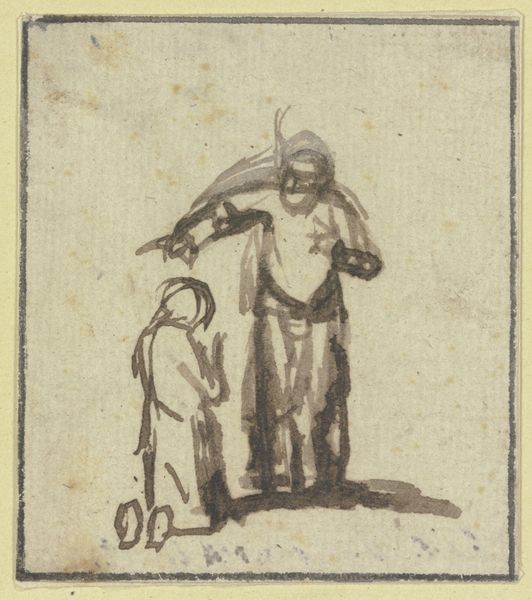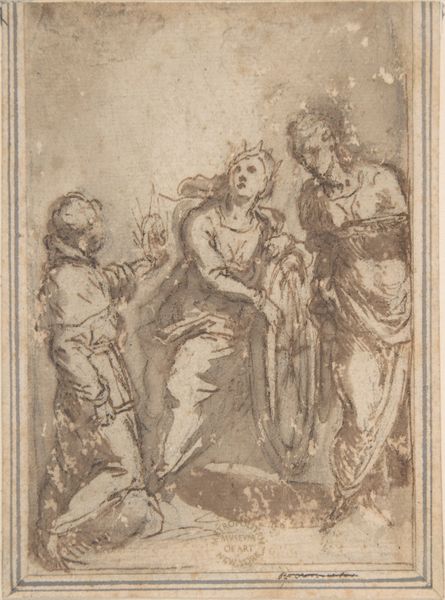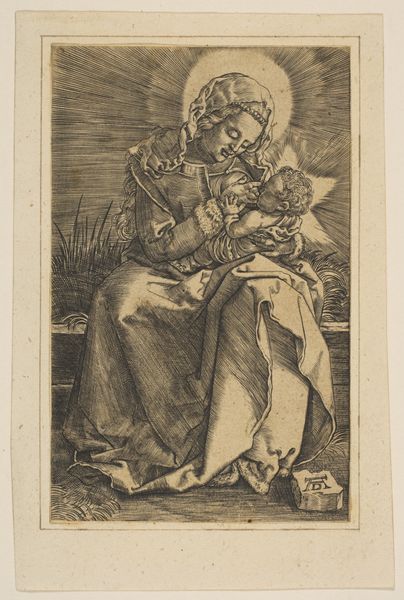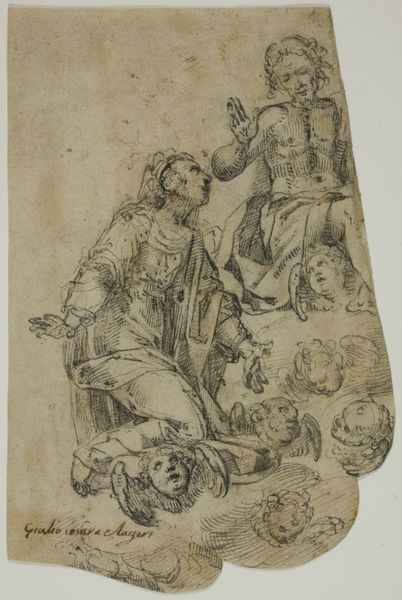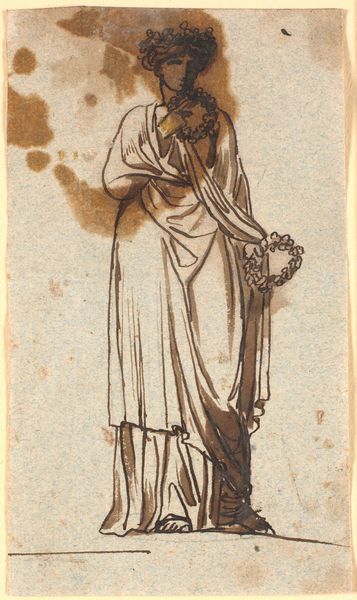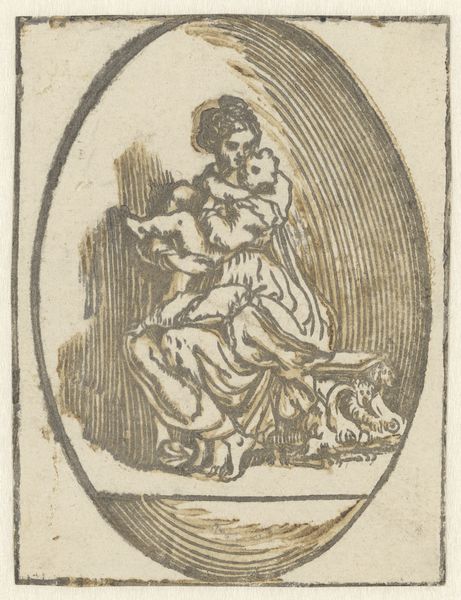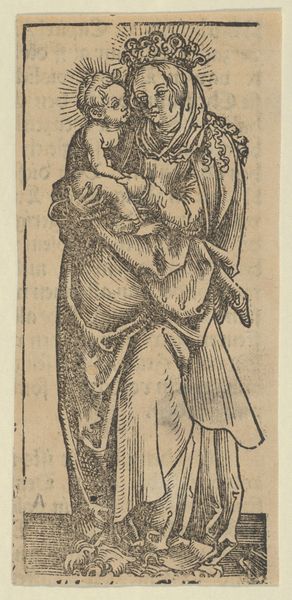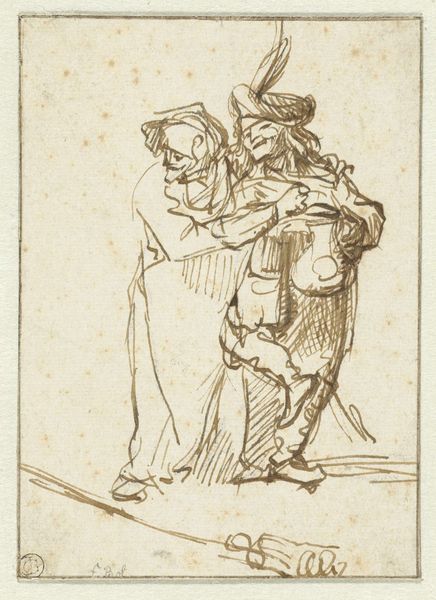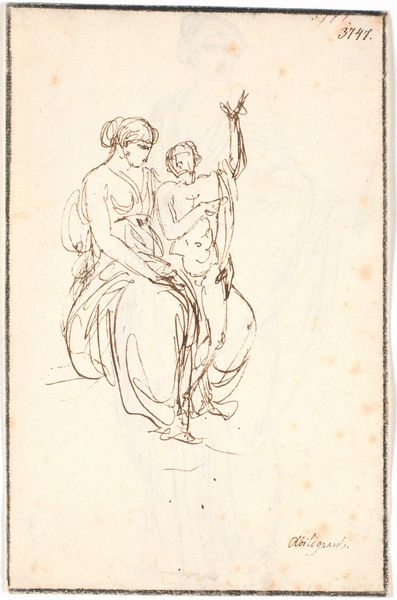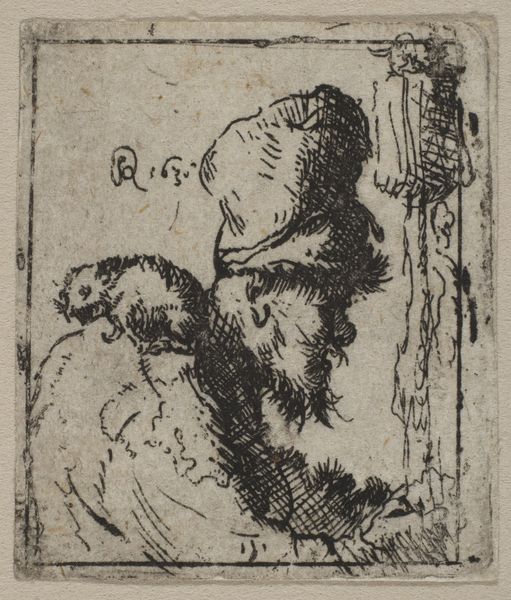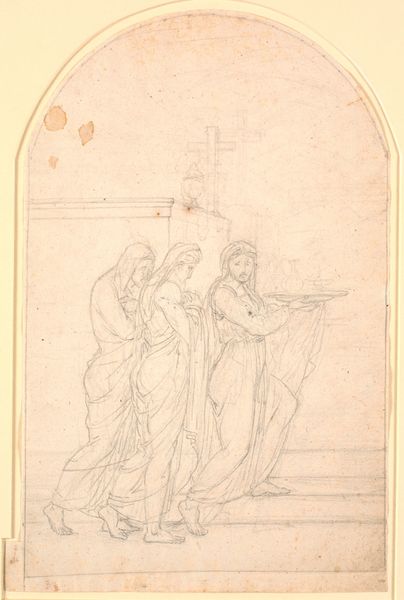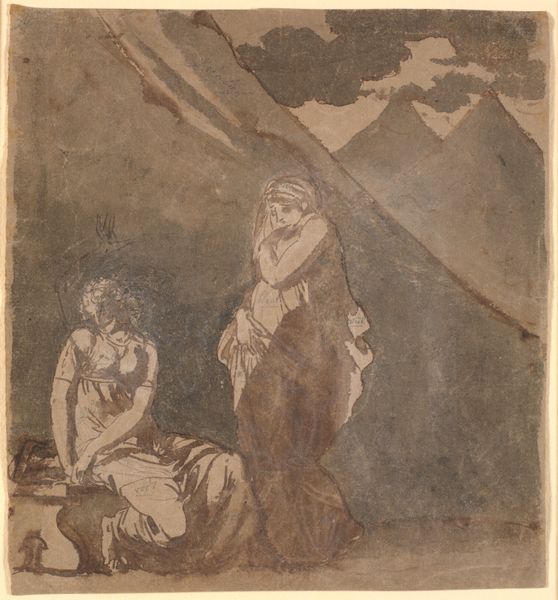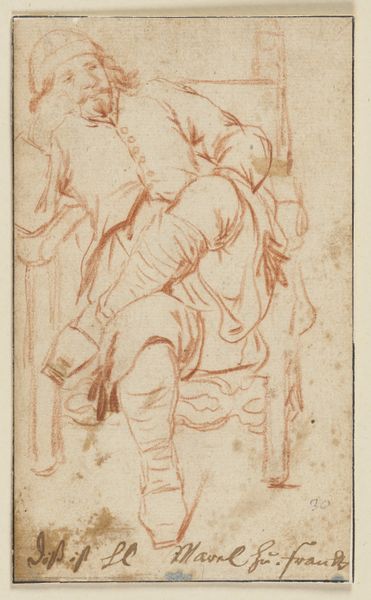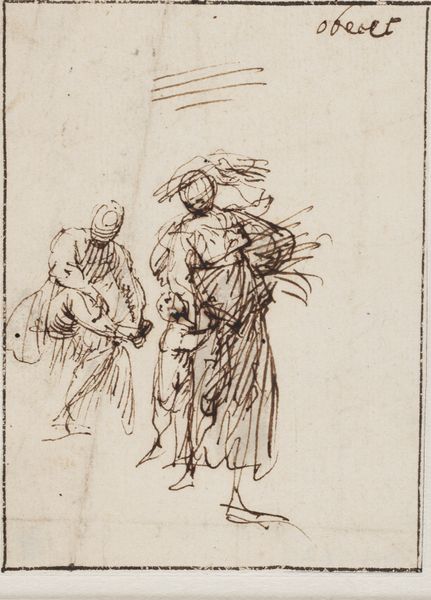
Dimensions: sheet: 5 9/16 x 4 5/16 in. (14.2 x 10.9 cm)
Copyright: Public Domain
Curator: This intriguing sketch, "Nemesis and Themis," was rendered in tempera, ink and wash on paper by Nicolai Abraham Abildgaard sometime between 1763 and 1809. Editor: My initial feeling is one of unfinished monumentality; these are figures laden with symbolic weight, but caught in a state of becoming. Curator: Precisely. Abildgaard was deeply invested in Neoclassical ideals. One sees it reflected in his precise draftsmanship and the clear evocation of ancient allegorical figures. Tempera, you know, requires meticulous labor. Editor: But what does it tell us about power and accountability? Nemesis, the spirit of divine retribution, standing alongside Themis, the embodiment of divine law...it's a potent pairing for a period rife with social upheaval. I can't help thinking of revolutionary ideals simmering just beneath the surface. Who held the means of production, who decided these classical forms, and what was it attempting to mask or idealize? Curator: I think that is interesting. Notice how Abildgaard employs ink and wash, building up layers of shadow to create depth and volume. One cannot ignore the texture of the paper, or the tonal relationships achieved with such rudimentary means. This highlights a move towards the mass production of imagery. These prints allow for ideas of justice and retribution to spread wider than ever before, thus making ideas such as 'power' more transparent. Editor: True, this accessible format could be seen as democratic in a sense, and yes, the material conditions mattered significantly. But let's not forget the socio-political undercurrents – who was dictating which messages got printed, distributed, and consumed, particularly in a society grappling with notions of liberty and justice. Are these images of power trying to instruct on some other truth? The underbelly of power can never truly be transparent when we consider the perspective of women during this era, as well. Curator: It prompts further examination of artistic practices, then and now. I believe we must ask questions that go deeper into what the materials really represented to the individual, not just who might've owned the printing press at that given point. Editor: I agree completely that the object has to speak on multiple levels. And if we unpack those multiple layers, perhaps this drawing can serve as a mirror, reflecting back on the ever-evolving relationship between power, justice, and representation.
Comments
No comments
Be the first to comment and join the conversation on the ultimate creative platform.
